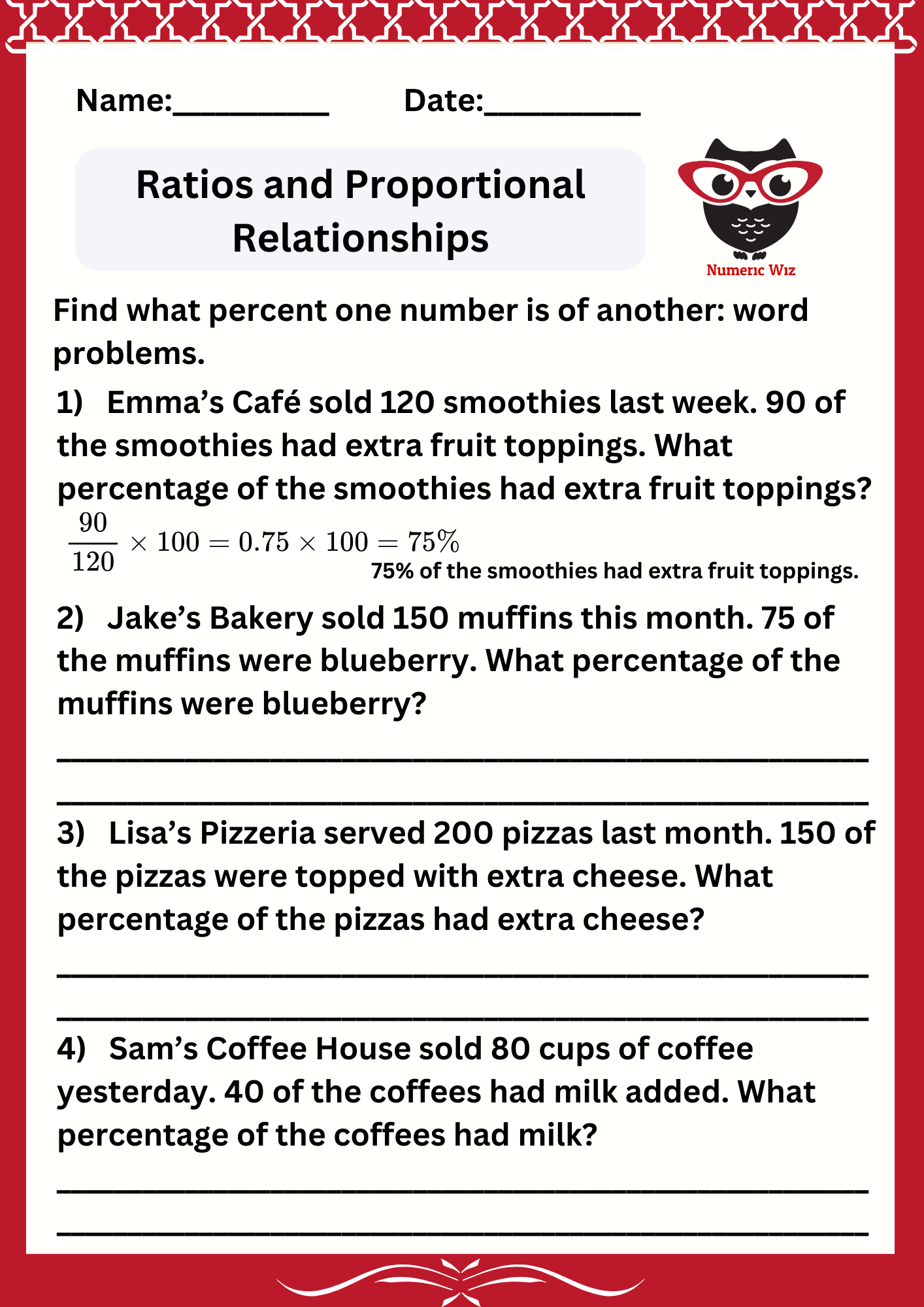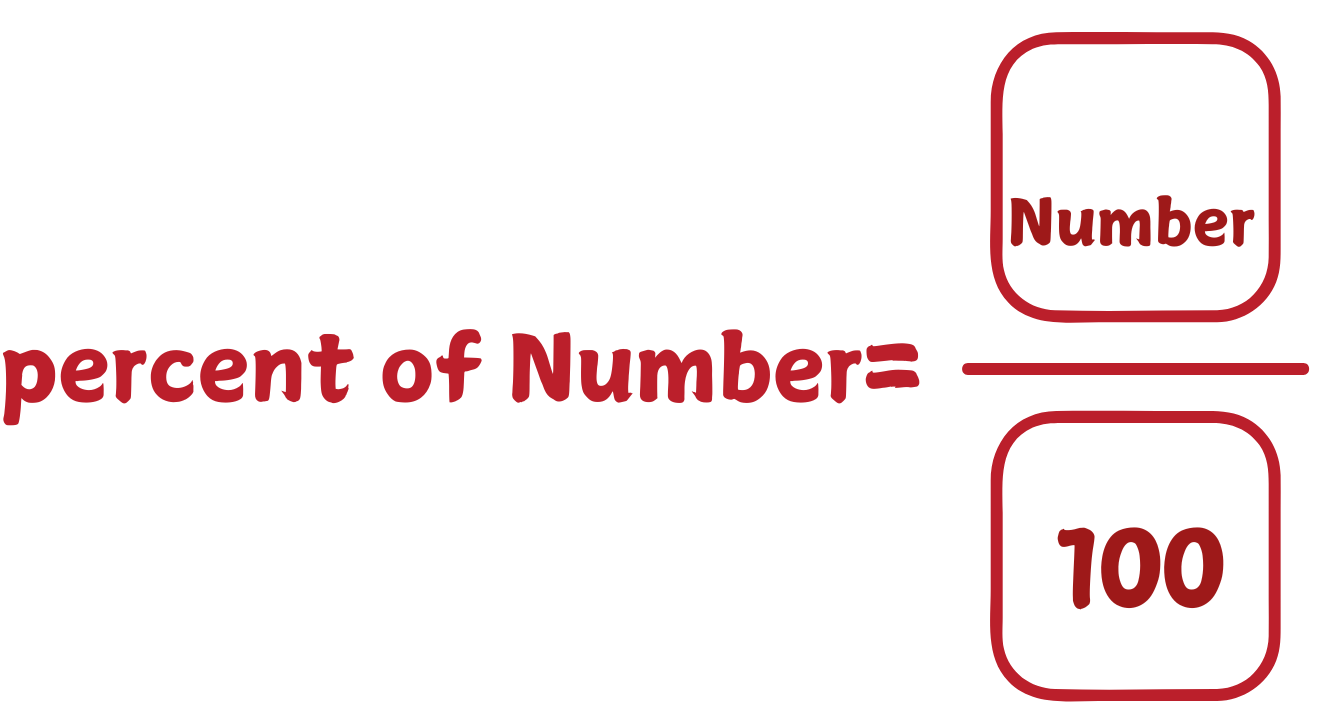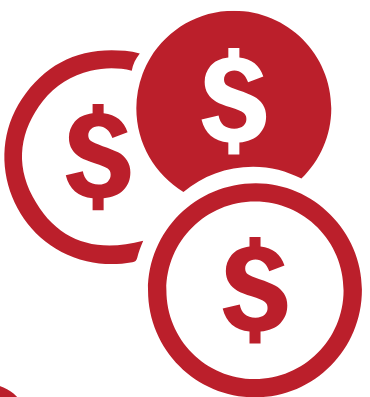
Percentages are a fundamental concept in mathematics used in everyday life, such as calculating discounts, taxes, and analyzing data. A percentage represents a part of a whole as a fraction of 100. For example, 30% of a quantity means multiplying it by 30/100 . Understanding how to work with percentages allows us to solve a variety of real-world problems efficiently.
To find a percent of a quantity, multiply the given number by the percentage (expressed as a fraction of 100).

Example:
Sarah bought a box of 200 pencils for her classroom. She gave 25% of the pencils to her students. How many pencils did she give to her students.
We calculate 25% of 200 by multiplying:
(25/100)×200=50
So, 25% of 200 is 50.
Sarah gave 50 pencils to her students.
This method is commonly used to calculate discounts, taxes, and commissions.
In some cases, you may know a part of the total and the percentage it represents. To find the whole, you can use the formula:
(percent/100)×whole=part

Example:
Liam completed 40% of his homework and found that he had finished 80 pages. How many total pages of homework does he have?
We set up the equation:
(40/100)×whole=80
whole=(80×100)/40=200
Liam has 200 pages of homework in total.
To determine what percent one number is of another, divide the part by the whole and multiply by 100.
Formula:(part/whole)×100
Example:
Emma collected 45 seashells during her beach trip. If she was aiming to collect 150 seashells in total, what percentage of her goal did she achieve.
To find the percentage, we use the formula.
(45/150)×100=30%
Thus, 45 is 30% of 150.
Emma achieved 30% of her goal.
Understanding percentages helps in various practical scenarios, such as:
 Shopping: If you bought an item for $30, and its original price was $50, you can find what percent $30 is of $50 to know how much you paid compared to the original.
Shopping: If you bought an item for $30, and its original price was $50, you can find what percent $30 is of $50 to know how much you paid compared to the original.
 Test Scores: If you answered 18 questions correctly out of 25, finding what percent 18 is of 25 helps you know your performance.
Test Scores: If you answered 18 questions correctly out of 25, finding what percent 18 is of 25 helps you know your performance.
 Savings: If you saved $200 out of your $1000 goal, you can find what percent $200 is of $1000 to track your progress.
Savings: If you saved $200 out of your $1000 goal, you can find what percent $200 is of $1000 to track your progress.
 Attendance: If 45 students are present out of 50, finding what percent 45 is of 50 shows the attendance rate.
Attendance: If 45 students are present out of 50, finding what percent 45 is of 50 shows the attendance rate.
.
By mastering percentage calculations, you can make informed decisions and solve complex problems with ease.
Let’s practice and evaluate your work together by percentages!
For a limited time
